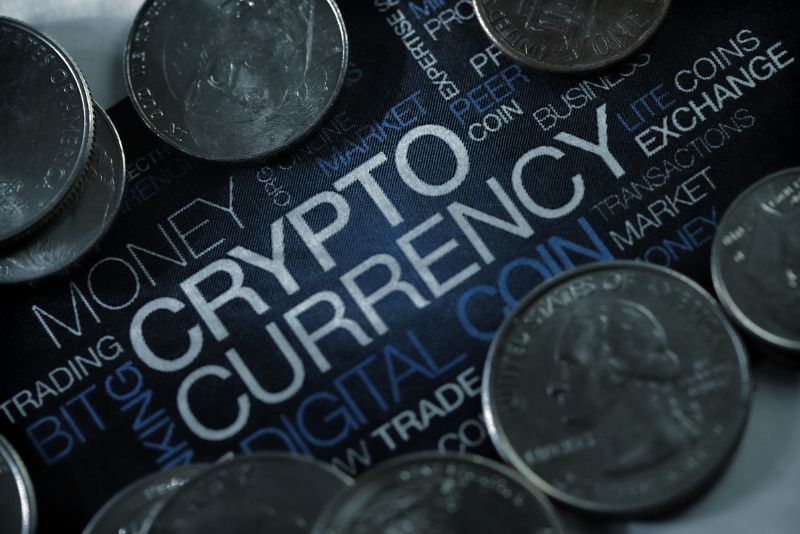Introduction
In modern days, it is no argument that cryptocurrencies have made a huge impact on not only the ways we trade but also on what we consider good investments. Although cryptocurrency is a new and exciting industry, it does carry risks for those who wish to invest in it. Hundreds of new coins get launched daily and add up to the number of existing coins, which leads to high volatility and speculative nature.
When taking on investing in cryptocurrency, day traders with prior experience in traditional financial markets still need to spend time doing a thorough research and have a well-rounded understanding of the crypto market. Is day trading cryptocurrency worth it? Let us take a look at the big picture about what you need to know to get started day trading cryptocurrency.
What is Day Trading?
The goal of day trading is to make money by making numerous deals on one or more assets throughout the course of the day. While conventional buy-and-hold investors are focused on long-term performance, day traders look to capitalize on more recent opportunities for profit.
As a result of its potential quick profitability, it is extensively used across all financial markets, especially the cryptocurrency. The crypto market offers massive volatility and day traders rely heavily on them for their crypto-assets (including coins and NFTs) to make a considerable amount of profit speculating on the short-term price fluctuations.
However, the high volatility is also a double-edged sword to traders as it also means a chance of great losses due to unpredictability.
Day Trading With Cryptocurrency
Thanks to the booming expansion of cryptocurrencies all over the world, the crypto market has been widely regarded as an increasingly popular destination – a new promised land – to day traders at any level. Making money by day trading cryptocurrency keeps on trending despite the suspicion and conspiracies against it from many big names in the business industry.
Differing from the traditional financial markets, the sun never sets for the crypto market – it never closes. Traders can make transactions 24/7 because cryptocurrencies are powered by blockchain technology and issued as mediums of exchange through decentralized networks. It also enables traders to process their payments without an intermediary.
The availability of cryptocurrency is somewhat convenient as you instantly make trades without the need for brokerages or anything alike. Still, the constant accessibility also poses a lurking threat that unfortunate impactful things have great chances to occur out of business hours and your awareness completely.
The world of cryptocurrency is still new and governments all over the world are still trying to develop regulations towards it, which may vary depending on your country. Traders are highly encouraged to do thorough research and familiarize themselves with any rules regarding the subject, for instance: taxes on day trading cryptocurrency profits, to ensure good compliance with those of your government.

Choosing Where to Trade
The crypto market is technically scattered with its digital exchange platforms (in the form of computer applications) in operation at multiple locations all over the world. Each exchange platform has its own pros and cons as well as exclusive features that set it apart from others.
Day traders should possess an overview of some of the most popular crypto exchanges, for instance: Binance, FTX, Coinbase, Kraken, KuCoin, Gate.io, Binance.US, Huobi Global, BitFinex, and Gemini.
When you have done your research and chosen a platform meeting all your needs, simply get on their main website to create your account as well as your crypto wallet. This type of wallet is both offered by the exchange itself or other third-party brands. Traders can create and own multiple wallets without worrying too much about which is the primary one to use as they can swap coins with each other easily. Just remember to secure your passwords safely.
Below are some main things you should look out for when choosing a crypto exchange:
- Credibility: actual reviews, ratings from users, and the official time in operation up to date can give you insightful information to evaluate your choice. In this constantly changing industry, being in business for a long time also means a good sign of stability.
- Liquidity: the ability of an exchange to quickly and easily convert from one coin into another without significantly impacting the price of the original one as a whole. The top cryptocurrency exchanges have high liquidity, enabling you to purchase or sell assets quickly and with little variation between the ask price and the bid price.
- Fees: gas fees or transaction fees are charged whenever buyers or sellers complete a transaction. To monetize their operations, all crypto exchanges require a small amount of fee. Depending on the exchange’s goal, the transaction cost structure may alter, for example, charging no fee for trades exceeding a certain threshold to encourage big trades.
- Supported cryptocurrencies: Big exchanges often lack a considerable amount of new and altcoins as they concentrate on which are known as stablecoins. Traders who are looking to make quick bucks from altcoins, as desired cryptocurrencies for day trading, may want to explore smaller exchange brands.
The Best Strategies for Day Trading Cryptocurrencies
When it comes to day trading, no matter which market it is, strategies are considered speculative and often carried out in different approaches than the long-term ones. Below are some of the most popular strategies for day trading cryptocurrency, both technical and non-technical:
Trading the news
News trading is similar to technical analysis in that it predicts human behavior and reactions rather than price patterns. By examining several information sources and statistics that come from posts on social media as well as articles published in trade and mainstream media, you try to forecast if demand for a specific cryptocurrency will decrease or increase.
Arbitrage
When a trader purchases a coin on one exchange, they can benefit by selling it right away on a different exchange for a higher price. This strategy is known as arbitrage in the cryptocurrency world. Coin pairs can make arbitrage opportunities easier to find. Arbitrageurs can earn by exploiting the value discrepancy when the price of a crypto pair, consisting of a lesser-known altcoin and Bitcoin, swings from one exchange to another.
Scalping
Scalping is a method of trading that generates small profits from several smaller deals, adding up to a larger profit. Scalping is usually preferably carried out with a cryptocurrency with a huge amount of circulating supply so that day traders can make trades more easily thanks to the liquidity. The time horizon might be as brief as a few seconds or as long as a few hours, but it is often a few minutes.
Range Trading
Range trading is based on the idea that cryptocurrency prices would often fluctuate only within a specific range over a particular time period. Price movement outside of that range is considered to be a sign that an abnormal shift in price is going to occur. For instance, if the price falls below the range’s bottom boundary, that can be a hint that it’s time to sell as a large downward movement is about to start.
High-frequency Trading (HFT)
With high-frequency trading, you can profit from price movements that happen on the order of seconds or fractions of seconds. However, a human trader could not possibly handle the process, which is where trading bots come in.
By setting up one or multiple trading bots, day traders can make transactions based on the trading logic provided and keep an eye on the market. High-frequency trading can be integrated with many different tactics by implementing appropriate trade logic.

The Downsides of Day Trading Cryptocurrencies
Promising as it may seem, day trading cryptocurrency is surely not easier than any financial market and requires you to reach a certain level of knowledge to make consistent flows of trading profits. New traders should pay attention to the following problems to keep the risk at bay:
- Due to how simple it is to begin trading cryptocurrency, a novice or inexperienced trader may suffer severe losses without proper training and careful guidance from traders with prior experiences.
- The 24-hour market has pros and cons. Day traders using cryptocurrencies could spend more time than they would in regular markets devoted to the charts, waiting for the ideal moment to execute a trade. Due to this, it may be considerably more difficult to identify patterns, and a brief day trading session may turn into a night trading session.
- Official regulations for the crypto-world from the governments are still in development in most parts of the world. If traders get scammed or an exchange suddenly closes with no further notice, users may not be able to get their money back without official legal day trading rules or a private insurance fund.
- You could become a victim of wash sales or pump-and-dump operations when trading cryptocurrency. This happens when a group of individuals (often referred to as whales) work together to artificially raise the price of a certain cryptocurrency in order to draw in unwary traders. After making profits, the traders dump a huge amount of that coin, driving down the price.
Conclusion
To make persistent flows of money out of day trading cryptocurrency, getting to know the essential knowledge and choosing platforms as well as strategies is only the first step of your journey. It still takes a lot of time for you to actually familiarize yourself with the crypto market and conquer it. But do not worry, more of our work is coming to help you out. So, stay tuned!


